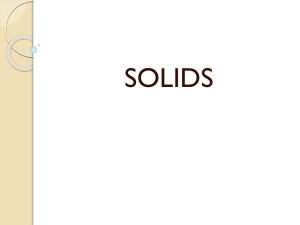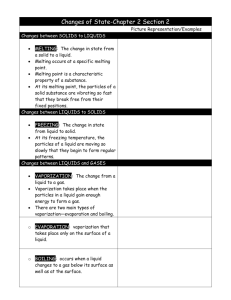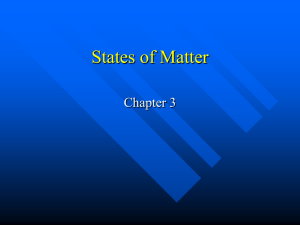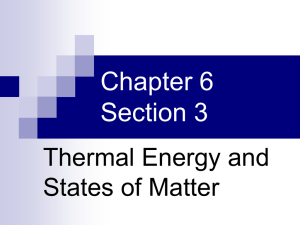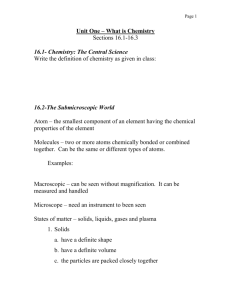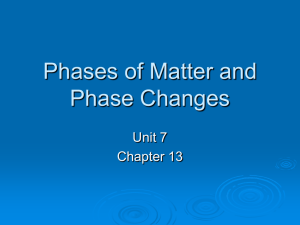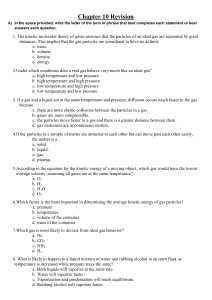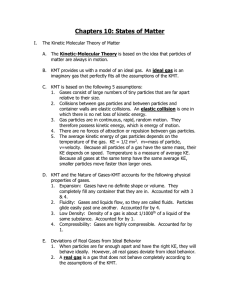Properties of Liquids
advertisement
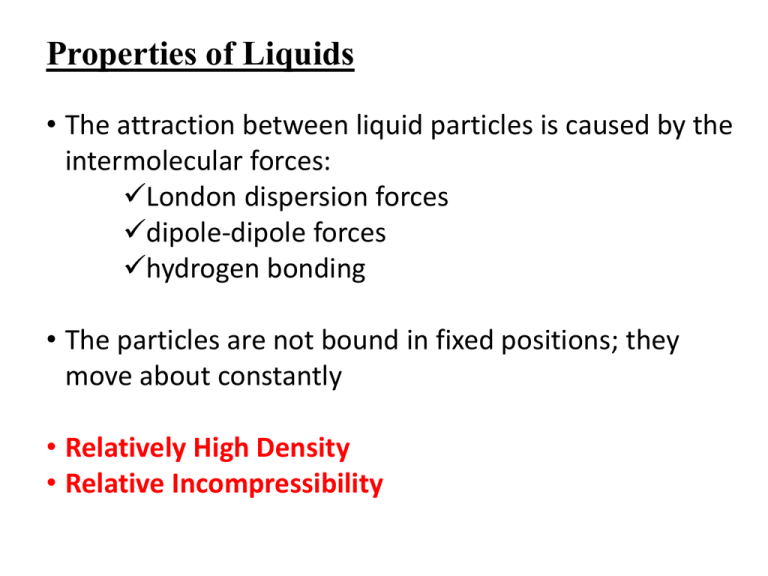
Properties of Liquids • The attraction between liquid particles is caused by the intermolecular forces: London dispersion forces dipole-dipole forces hydrogen bonding • The particles are not bound in fixed positions; they move about constantly • Relatively High Density • Relative Incompressibility Ability to Diffuse Surface Tension • A force that pulls adjacent parts of a liquid’s surface together, decreasing surface area to the smallest possible size. • The higher the force of attraction between the particles of a liquid, the higher the surface tension Capillary Action • Attraction of the surface of a liquid to the surface of a solid • This attraction tends to pull the liquid molecules upward along the surface and against the pull of gravity. • Responsible for the concave liquid surface, called a meniscus, that forms in a test tube or graduated cylinder. Properties of a Solid • Attractive forces tend to hold the particles of a solid in relatively fixed positions. There are two types of solids: 1. Crystalline solids - particles are arranged in an orderly, geometric, repeating pattern. 2. Amorphous solids - particles are arranged randomly; have no definite melting point Sometimes called supercooled liquids (retain certain liquid properties even at temperatures at which they appear to be solid) Solids • Definite Shape and Volume • High Density and Incompressibility • Low Rate of Diffusion Binding Forces in Crystals 1. Ionic crystals: + and - ions arranged in a regular pattern. 2.Covalent network crystals: covalently bonded atoms 3.Metallic crystals: metal cations surrounded by a sea of electrons. 4.Covalent molecular crystals: covalently bonded molecules held together by intermolecular forces. Phase Changes (change of state) • A phase has uniform composition and properties • Equilibrium is a condition in which two opposing changes occur at equal rates in a closed system; a balance • LeChatelier’s Principle: When a system at equilibrium is disturbed, it will shift to minimize the stress applied and form a new equilibrium position Six Possible Phase Changes • solid → liquid = • liquid → solid = • liquid → gas = • gas → liquid = • solid → gas = • gas → solid = melting freezing vaporization condensation sublimation deposition Phase changes need either the absorption of energy or release of energy to occur. Heat is the transfer of energy from an object at a higher temperature to an object at lower temperature. Endothermic process: absorbs energy (vaporization, melting, sublimation) Exothermic process: release of energy (condensation, freezing, deposition) Vaporization • Evaporation only occurs at the surface of a liquid. • Volatile liquids are liquids that evaporate readily. • Boiling is the conversion of a liquid to a vapor within the liquid as well as at its surface. • Boiling point: the temperature at which the vapor pressure of the liquid equals the atmospheric pressure. The normal boiling point of a liquid is the boiling point at normal atmospheric pressure (1 atm, 760 torr, or 101.3 kPa). For example: The normal boiling point of water is exactly 100°C. Phase Diagrams • A graph of pressure versus temperature that shows the conditions under which the phases of a substance exist. • triple point: the temperature and pressure at which all three phases can coexist at equilibrium. • critical point: the critical temperature and critical pressure above which a substance cannot exist as a liquid. • Above the critical temperature water cannot be liquefied, no matter how much pressure is applied. Phase Diagram for CO2
